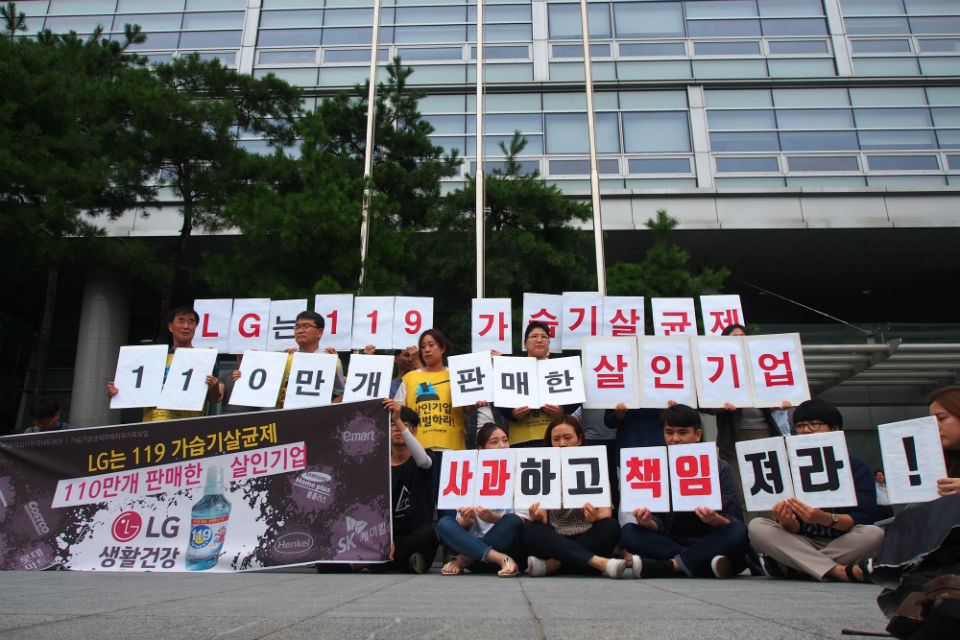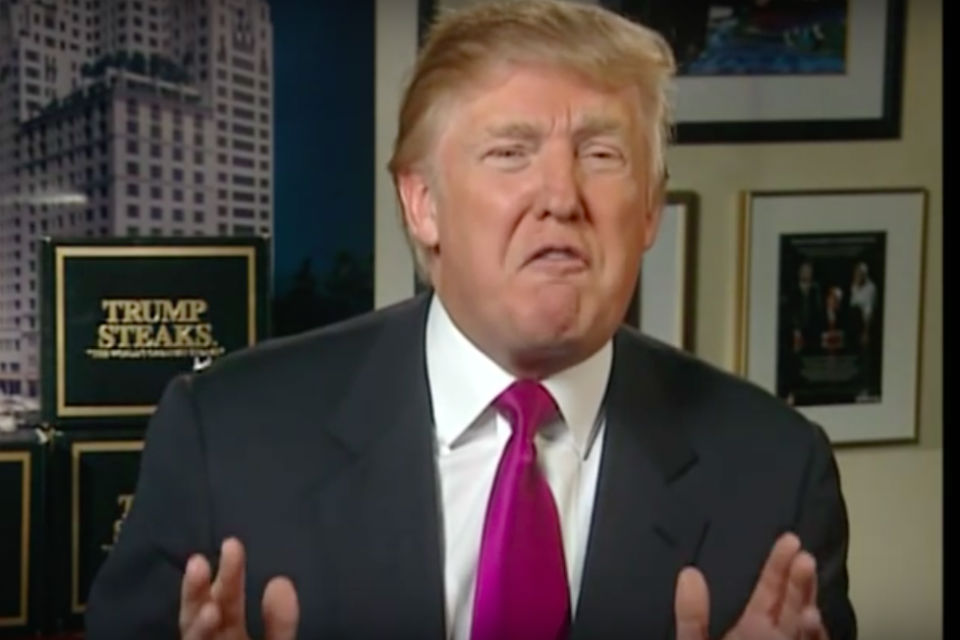
Moon Jae-in May Not Live Up to His Promise in "Oxy Affair"
Victims of South Korea’s deadly humidifier disinfectant scandal, which has killed dozens of consumers and left hundreds more injured for life, had pinned their hopes on the new Moon Jae-in administration to provide compensation. But the signals now coming from the government are mixed.
Humidifiers are widely used in South Korean households and workplaces, especially in the dry months of winter. From 1994 to 2011, millions of Koreans used disinfectant products that were added to the water in the humidifiers and, unbeknownst to consumers, would end up causing severe lung damage to hundreds of people when inhaled.
The whole affair is often called the “Oxy scandal,” after the local subsidiary of British conglomerate Reckitt Benckiser that sold one of the disinfectant products. Oxy caused widespread outrage in South Korea by finally issuing an apology last year — five years after the scandal broke. In January this year, former Oxy Reckitt Benckiser Korea CEO Shin Hyun-woo was sentenced to seven years in jail for his role in the scandal.
Most consumers bought the product to create a healthier indoor environment. None suspected that it would leave them or their children with lifelong respiratory problems, or even dead.
“There were TV commercials for it playing all the time, so I bought some,” said Lee Hye-sook, who used Oxy products in 1998. “Two goldfish in the tank by the humidifier died, one after the other. At the time, I thought there must be a problem with the tap water.”
Lee’s daughter was around six months old at the time. Since then, she has suffered from asthma, bronchitis and pneumonia, but was only categorized as a “level 4” patient in a government assessment, leaving her ineligible for financial aid (accorded to level 1 and 2 patients only).
So far, the government has assessed over 2,000 claimants. Less than 400 of them have been officially recognized as victims.
Official recognition is a hugely important for victims as it entitles them to have their medical expenses covered by the government. It’s one of the key unresolved issues in the “Oxy affair.”
On Aug. 8, president Moon Jae-in met victims and promised to ensure greater financial support for their medical costs. The following day, a special relief fund management committee under the auspices of the Ministry of Environment (ME) awarded 30 million won (about 26,000 U.S dollars) in emergency medical funding to three victims, despite the fact the fact that they had not been officially recognized.
The ministry also announced that it would charge 18 humidifier disinfectant manufacturers a total of 125 billion won (almost 110 million dollars) to be allocated to other victims, and that it would recognize those with level 3 and 4 lung disorders as official victims.
But victims’ groups became infuriated on Aug. 10, when the ME’s committee on damage relief announced that only 76 of the latest 1,009 lung damage patients (in the fourth round of government assessments) had been recognized as victims.
Though these assessments took place before Moon’s announcement, the announcement of their results — just two days after his promise for improvement — proved bewildering.
On Aug. 16, Asian Citizens’ Center for Environmental Health (ACCEH), and two other civic groups formed specifically in response to the humidifier problem, issued a statement calling for the official recognition of more victims.
“The criteria for victim status are too narrow,” said Choi Ye-yong, director of ACCEH. “They only look at lung damage, but many victims received damage to their nasal passages, skin and elsewhere. The president promised to rectify these problems – we can’t believe they announced these highly disappointing results just two days later.”
The exact number of victims of humidifier disinfectant inhalation is unclear: It is up to consumers to report health problems. But it isn’t easy to prove that problems were caused by the disinfectant. ACCEH estimates the number of deaths at around 1,100, with the number of injuries far higher. Even foetuses were affected, with five officially recognized as having died in the womb and two after birth as a result of humidifier disinfectant (again, this number may rise in the future).
Recently, two victims groups held a press conference outside the headquarters of LG Household & Health Care (LG H&H) to demand that the company take responsibility for its part in the scandal. LG H&H sold over 1.1 million bottles of its humidifier disinfectant product ‘119’ between 1997 and 2003, and maintains that 119 produced no victims.
But a 2006 report from the US Environmental Protection Agency (EPA) found that 119’s active ingredient, alkyl dimethyl benzyl ammonium chloride (ADBAC), posed a risk to adults and children when inhaled. ABDAC is classified as a biocide (poison) and a cationic surfactant, a type of chemical often used in cleaning products.
LG H&H managed to keep 119 off the public radar throughout the course of the scandal, until its existence was brought back to light in a parliamentary investigation last year.
“LG H&H reaped the biggest benefits from the ‘chemiphobia’ that’s grown in Korea over the last five or six years since the humidifier disinfectant scandal,” said Choi. “That’s because no one knew that LG had sold humidifier disinfectant,” which means the company (part of the massive conglomerate LG Group) benefited from a relatively clean image among consumers.
Lee In-ick, a manager at LG H&H, claimed that his company had supplied the EPA report on ABDAC, that the report did not actually suggest that ABDAC was harmful when inhaled, and that the victim’s associations may have misinterpreted the data. “We’ve been investigated by the government and they found that 119 contained no harmful substances,” he told Korea Exposé. “And there have been no reported victims of 119.”
There may be victims of 119 out there, however. In 1998, Lee Hye-sook, whose daughter now has asthma, bought and used both 119 and Oxy’s Ssak Ssak humidifier disinfectant, the most notorious product in the scandal thanks to its manufacturer’s long refusal to admit responsibility and the fact it was the best-selling humidifier sterilizing product.

Like Choi, Lee hopes the government will broaden its definition of victimhood to allow support for more of those affected.
Choi’s organization ACCEH believes there is a high probability that more people were affected, because 119 was the third-best-selling humidifier disinfectant on the market from 1997 to 2003.
President Moon Jae-in’s government came into power with a manifesto committing to ensure thorough management of toxic products. The humidifier scandal has been described as “one of the worst environmental disasters in South Korean history” (a dramatic statement to be sure, but valid when considering the number of victims possibly affected). It remains to be seen how effective his measures will be in compensating the victims and preventing future health threats.
“I feel so guilty,” said Lee Hye-sook. “I bought those products with my own hands, just to raise my child more healthily.”
Cover image: Victims’ representatives call for LG Household and Health Care to take responsibility for the alleged damage caused by its humidifier disinfectant product 119, outside the company’s Seoul headquarters on Aug. 14. (Ben Jackson/Korea Exposé)
